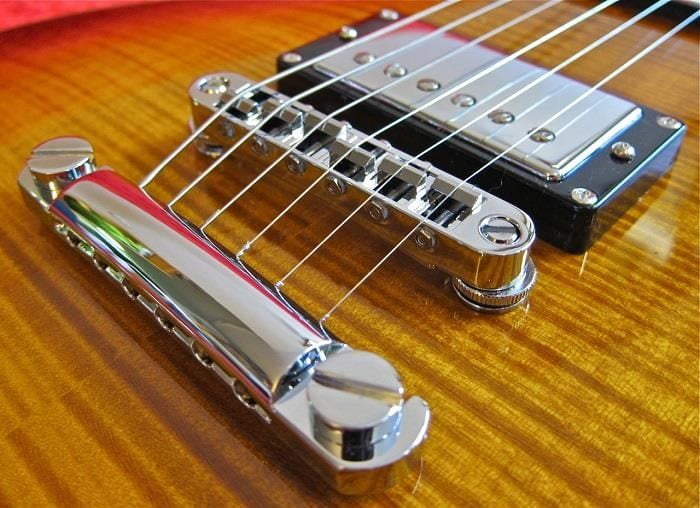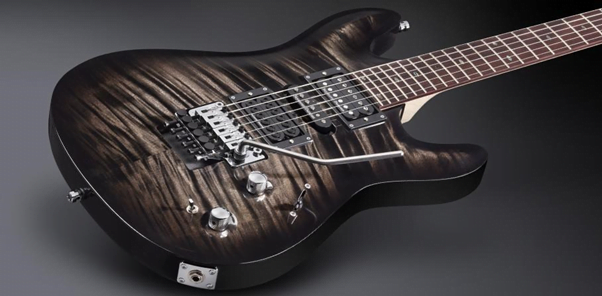FIXED OR FLOATING?
By Aldo Chircop
Most people who meddle with guitars for a period of time, will end up with a case of G.A.S. (Gear Acquisition Syndrome) some time or another.
There is such a variety of gear out there nowadays – from guitars, to amplifiers, to effect pedals and consoles, to recording gear, accessories and everything else under the sun – that it’s hard not to be sucked into wanting to try out and acquire as much of it as possible.
Often this drive to acquire new toys and shiny objects is used to cover up other issues, such as feeling disappointed with our progress on guitar, or feeling that we have lost some of our original enthusiasm and inspiration. The allure of purchasing new gear and its promise of injecting some new enthusiasm into our guitar journey, or even of finally making us sound like our favourite guitar hero (you’ve fallen into this line of thinking too at some point haven’t you, admit it…), is therefore understandable, albeit a bit dangerous. But that is a topic for another day.
My objective for this series of articles is to tackle one aspect of guitar gear at a time, in the hope of making it easier for readers to navigate the morass of information and opinions out there. Although the right piece of gear can add a lot of fun and practicality to our guitar playing, getting the wrong piece of gear can have the opposite effect – frustrate us, and frankly stir a lot of anger at ourselves for having wasted money on a piece of gear that did not deliver what we were after, or that presented drawbacks which we weren’t aware of.
The topic for today is:
What is best, a fixed bridge or a floating bridge?
For readers who may be just considering starting out on guitar and have little previous knowledge of guitar hardware, this may sound like Double Dutch, so a few words of explanation are in order.
Essentially, a ‘bridge’ in guitar speak is the component that holds the strings in place at the lower end, on the guitar body.
There are lots of designs and variants out there, but simply speaking we can divide them into two main categories: ‘fixed bridges’ and ‘floating bridges’.
A fixed bridge is, as the name implies, fixed. It’s only function is to hold the strings in place as securely as possible, and is therefore simply a means to anchor the strings to the guitar body. It does not move.
Floating bridges however add another twist to the mix: the floating bridge itself is designed to be able to move parallel to the direction of the strings by swivelling on a pivot. A set of springs housed in a routed cavity at the back of the guitar body balances out the tension of the strings. The floating bridge then has a lever with which the guitarist can manipulate the position of the bridge. For what purpose? Moving the bridge in one direction or another, increases or reduces string tension, and therefore changes the pitch of the strings.
Example of fixed bridge

Example of floating bridge

So, should you go for the floating bridge or the plainer, more pedestrian fixed bridge? As most things in life: “it depends.”
First, here’s the good news on the floating bridge: it allows you to easily employ certain tricks and techniques which are very difficult or impossible to do without it, such as:
- Bending the pitch of a note up or down by dramatic amounts if you want, from ‘slacking’ down the string completely, to bending it up to almost breaking point.
- Easily apply vibrato to whole chords, not just single notes.
- Deliver dramatic special effects, such as warbling notes, siren like sounds and squealing ‘dive bombs’.
You get the idea. If you love those types of dramatic sounds and can envisage using them a lot in your style of playing, then you’ll love having a floating bridge, and will probably need to have one.
However, here is the bad news about floating bridges:
- They need a lot more setting up effort. The tension of the balancing springs needs to be precisely calibrated so that they balance out perfectly the tension of the strings at rest. If the tension is off even by a little amount, you will be unable to keep your guitar in tune. Achieving this precise balance can be a lengthy and fiddly process.
- Any change to this precisely calibrated setup can put your guitar wildly out of tune, and/or require it to be set up again. You want to experiment with a different string gauge? You’ll need to recalibrate the bridge. You want to try out a different tuning than standard? Again, you’ll need to recalibrate the bridge. This means that essentially, a guitar equipped with a floating bridge can only be used with a specific string gauge and specific tuning. Anything that results in a change in overall string tension, will require re-calibration.
- If a string breaks during a performance, you’re in trouble. When a string goes AWOL, the overall string tension acting against the balancing springs is suddenly reduced, which means that all the remaining strings will be pulled sharply out of tune by the pull of the springs. Imagine that happening while playing a solo. Ouch!
- You need to be careful not to inadvertently put your guitar out of tune by being too ‘heavy handed’. For example, if you press down too hard on the bridge while palm muting, you can disturb its position enough to sound out of tune. Similarly, holding an extreme string bend with the fretting hand can affect the overall tension, thus also affecting the tuning of the other strings. Not good, if you also want to play notes on the other strings while holding a deep bend on one string.
- Changing strings can be a real pain, especially for those floating bridges that require you to cut out the ball end on every string and use Allen screw clamps at both ends. If you play a lot and need to change strings frequently, this alone can be a real drag.
So, what are the advantages of the fixed bridge? Basically, the reverse of all the disadvantages of the floating bridge. Setting it up is a lot simpler and easier. It makes it much easier and quicker to change strings. You can freely change tunings on the same guitar and it will still hold the tuning. You can experiment with different string gauges without needing to recalibrate the bridge. It is more forgiving on how you play, and will not go out of tune if you palm mute heavily or use extreme bends with your fretting hand. If a string breaks during a performance, you can still finish the song by adapting to the missing string, since the remaining strings will stay in tune.
The disadvantage, of course, is that it does not allow the ‘special effects’ which a floating bridge allows.
So, what is the best choice for you if you had to pick just one guitar?
The question you need to answer is this: do you really need to be able to do those special effects? Are they or will they be a significant part of your playing style?
If the answer is yes, then a floating bridge is a must for you. But if not, 24 years of guitar playing have taught me that your guitar playing life will be much easier with a fixed bridge. The extra hassle inherent in the floating bridge will not be worth it in the long run unless you really, absolutely, positively need it.
Now you know the basic ins and outs of guitar bridges, and this knowledge should better arm you to navigate the vast world of guitar gear out there.
I’ll conclude in a similar vein as I started this essay, by reminding you that guitars and other gear are merely tools. The most essential element in the equation is the musician using those tools. Educate yourself on gear enough to be able to choose what serves your needs best, but keep the bulk of your focus on what matters most: developing your skills as a musician.
Happy playing!
About the author:
Aldo Chircop is a guitarist, composer, producer and guitar teacher based in Malta. He is president and chief instructor of Malta Rock Academy, home of the best blues, rock and metal guitar lessons in Malta.
